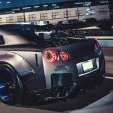FLUTTER sound as BOV
Announcements
-
Similar Content
-
Latest Posts
-
Nope, needed to clearance under the bar a little with a heat gun, a 1/2" extension as the "clearancer", and big hammer, I was aware of this from the onset, they fit a 2.0 with this intake no problems, but, the 2.5 is around 15mm taller than a 2.0, so "clearancing" was required It "just" touched when test fitting, now, I have about 10mm of clearance You cannot see where it was done, and so far, there's no contact when giving it the beans Happy days
-
By GoHashiriya · Posted
It's been a while since I've updated this thread. The last year (and some) has been very hectic. In the second-half of 2024 I took the R34 on a trip through Germany, Italy, France and Switzerland - it was f*cking great. I got a little annoyed with the attention the car was getting around Europe and really didn't drive it that much. I could barely work on the car since I was living in an inner-city apartment (with underground parking). During the trip, the car lost power steering in France - split hose - and I ended up driving around 4,000kms with no power steering. There were a few Nurburgring trips here and there, but in total the R34 amassed just shy of 7,000kms on European roads. Long story short, I broke up with the reason I was transferred to Europe for and requested to be moved back to Japan. The E90, loved it. It was a sunk cost of around EUR 10,000 and I sold it to a friend for EUR 1,500 just to get rid of it quickly. Trust me, moving countries f*cking sucks and I could not be bothered to be as methodical as I was the first time around. -
Entry List updated!
-







Recommended Posts